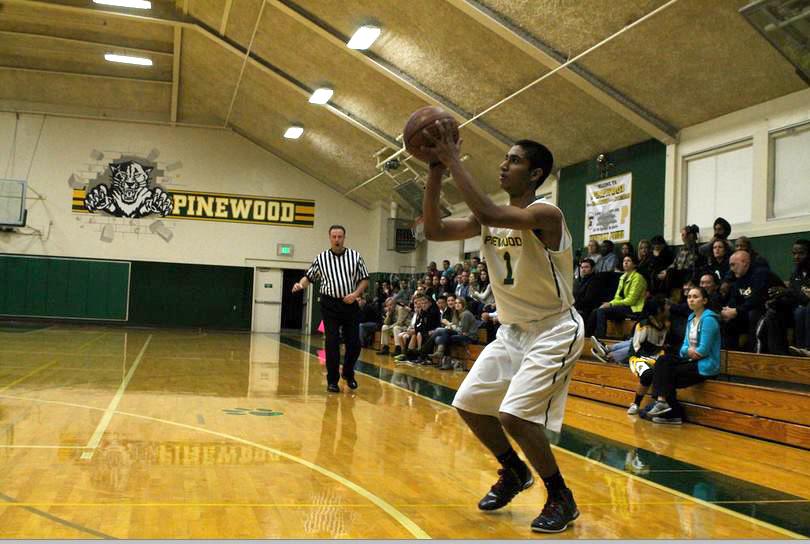Eighth grader Roshan Bal, a 6’2” forward, was the best basketball player at Redwood Middle School in eighth grade. Everyone thought that Bal would be the one to bring his 3-pointers and slam dunks to the SHS gym in a few short months.
Following eighth grade, however, Bal transferred to Pinewood High School, a private school in Fremont after completing eighth grade. He felt Pinewood gave him the best combination of athletics and academics.
At Pinewood, Bal has achieved no small measure of success. As a sophomore, he is among the youngest members of Pinewood’s boys’ varsity basketball team — a team that, as of March 15, has won 24 of 29 games and is deep into CIF state playoffs.
Senior K.J. Carta-Samuels, a Bellarmine quarterback, is another prominent example of a Saratoga resident who pursued athletics at another school. Others include junior Sean Welch, a St. Francis water polo player, and junior Joe Rodriguez, a Bellarmine lacrosse player. Additionally, junior Araad Sarrami, who spent two and a half years at Saratoga and was ranked fourth in CCS wrestling in his weight class as a sophomore, transferred to Bellarmine near the start of the wrestling season.
Such a trend in recent years could be causing Saratoga prowess in “major” sports like basketball and football to decline. For instance, in this past season the boys’ varsity basketball team went 6-17, and the football team had a disappointing 3-7 season. As a result, some fans have taken to wondering: How can Saratoga athletics improve?
The stereotypical answer might be that students are too focused on their grades, and need to branch out. Or that the kids that live here aren’t as interested in sports as students at other schools. The real issue, though, might be that the area does have talent — but it can’t keep it.
Athletics director Tim Lugo is well aware of this phenomenon.
“It impacts us quite a bit,” he said. “If every team had an extra [two to three] standout players on the roster, that [would make] huge difference for a school like us.”
Rather than official recruitment processes, Lugo said, private schools benefit from parents and boosters who advertise their school to neighbors.
“Private school coaches [don’t] go out to recruit,” Lugo said. “It’s illegal as far as CCS goes and sports can be sanctioned by it.”
Some student athletes choose private schools because they often boast a more experienced coaching staff.
One reason Bal chose Pinewood was its coach, Mani Messy, who played three years of professional basketball in Europe. Messy scored an average of 20 points per game, and when he retired in 2009, he founded an elite basketball academy in Los Altos.
Messy is an example of the kinds of coaching talent private schools can attract.
“If a [private school] wants somebody, they can offer a teaching job that the public school can’t always offer,” he said. “That’s a definite disadvantage we have in attracting coaches.”
Lugo added that in local private schools like St. Francis, Mitty and Bellarmine, many coaches are also on-campus teachers.
Despite these challenges, Lugo said, coaches work hard with the athletes they have.
“No one will come out and say [they’re leaving] strictly because of athletics,” Lugo said. “But we know [they are].”
Of course, many top athletes choose to stay at the school, despite the benefits many believe private schools offer. One such athlete is tennis player and junior Neel Bedekar, who is currently ranked 25th in California.
“To attend Saratoga High is free,” Bedekar said. “None of the competitive schools, public or private, have an academic program [that can rival Saratoga’s] so for me, choosing [Saratoga] was a no-brainer.”
Bedekar added that even though Saratoga might have access to fewer athletic resources, it clearly is just as competitive as any other school, considering it won the Fresno tournament earlier this year.
“We definitely have the best team out of the public schools in the area,” Bedekar said. “We [might be] one of the best public school teams in the nation.”


























